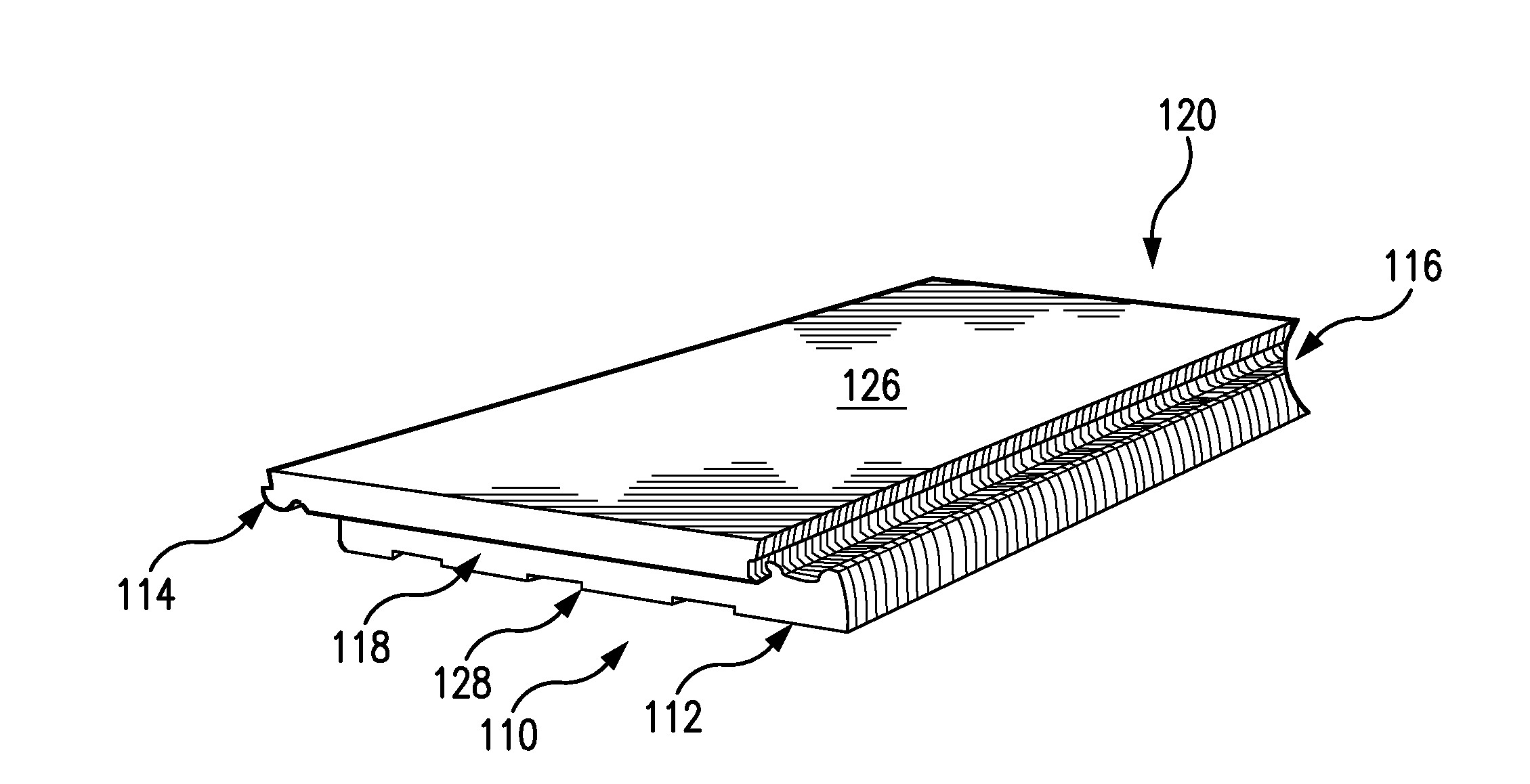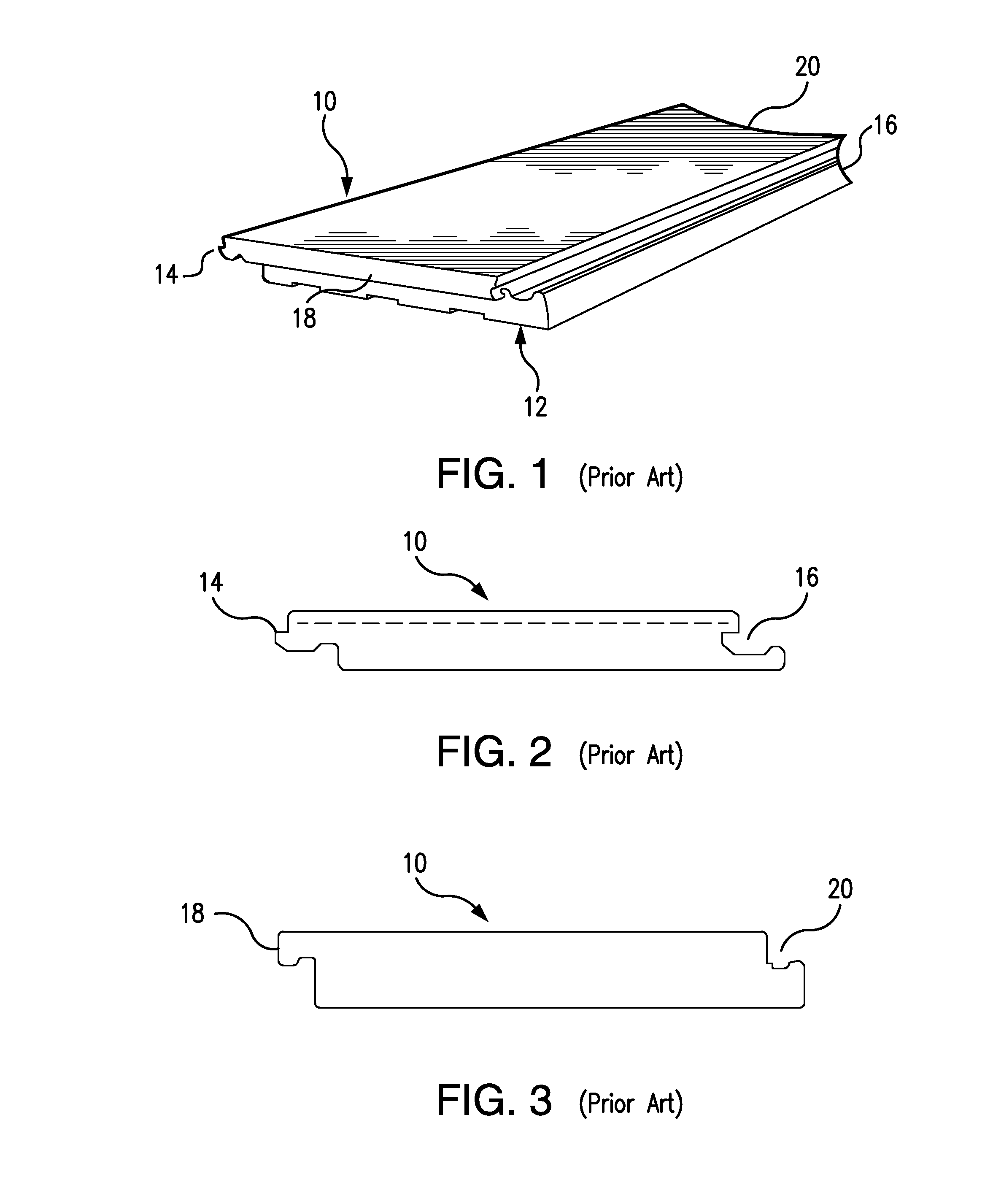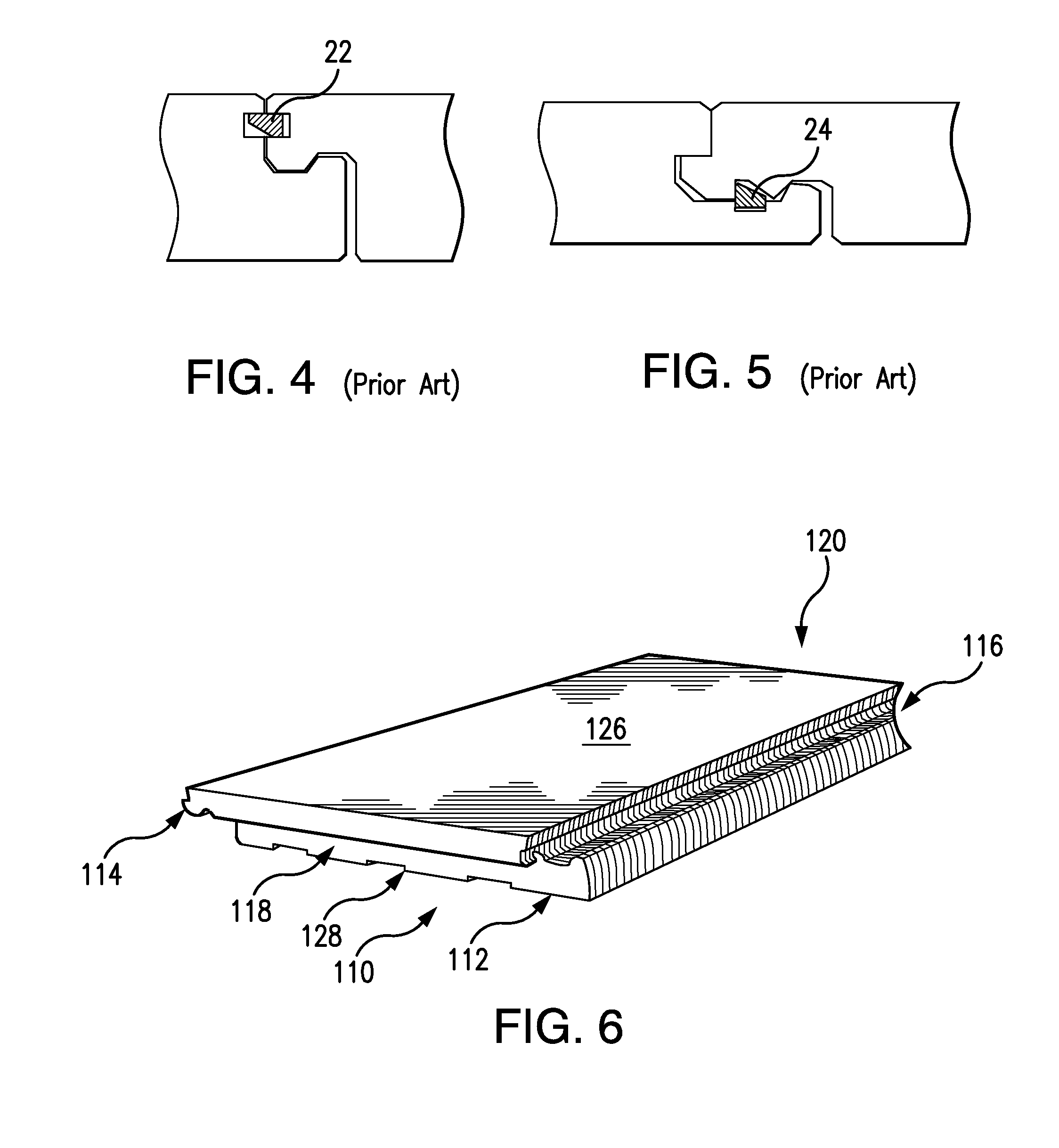Non-squeaking wood flooring systems and methods
a wood flooring and non-squeaking technology, applied in the field of wood flooring systems, can solve the problems of increasing the total cost of the consumer, slow nailing or gluing technique, and delay in installation, so as to avoid squeaking and avoid squeaking of the floorboards
- Summary
- Abstract
- Description
- Claims
- Application Information
AI Technical Summary
Benefits of technology
Problems solved by technology
Method used
Image
Examples
Embodiment Construction
[0050]The present invention relates to systems and methods of protecting solid-wood flooring systems with click-type interlocking joint systems against undue humidity absorption and frictional rubbing to thereby avoid squeaking after installation. In various aspects, the invention includes floorboards having protective film systems covering their contacting click system surfaces, protective film systems for applying to the contacting click system surfaces of floorboards, and methods and machines for applying the film to the click systems of the floorboards. The protective film systems significantly reduce moisture intrusion / escape and frictional rubbing of the floorboards to thereby minimize / eliminate squeaking after installation to produce a non-squeaking floor system.
[0051]As used herein, the term “floorboards” includes flooring panels, planks, tiles, and other similar plate-like wood-based structures. And the term “non-squeaking” means completely or at least substantially non-squ...
PUM
| Property | Measurement | Unit |
|---|---|---|
| thickness | aaaaa | aaaaa |
| thickness | aaaaa | aaaaa |
| thickness | aaaaa | aaaaa |
Abstract
Description
Claims
Application Information
 Login to View More
Login to View More - R&D
- Intellectual Property
- Life Sciences
- Materials
- Tech Scout
- Unparalleled Data Quality
- Higher Quality Content
- 60% Fewer Hallucinations
Browse by: Latest US Patents, China's latest patents, Technical Efficacy Thesaurus, Application Domain, Technology Topic, Popular Technical Reports.
© 2025 PatSnap. All rights reserved.Legal|Privacy policy|Modern Slavery Act Transparency Statement|Sitemap|About US| Contact US: help@patsnap.com



